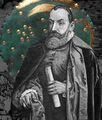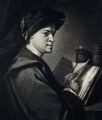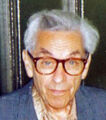Template:Selected anniversaries/March 26: Difference between revisions
No edit summary |
No edit summary |
||
| Line 78: | Line 78: | ||
||2011: Paul Baran dies ... engineer who was a pioneer in the development of computer networks. He was one of the two independent inventors of packet switched computer networking, and went on to start several companies and develop other technologies that are an essential part of modern digital communication. Pic. | ||2011: Paul Baran dies ... engineer who was a pioneer in the development of computer networks. He was one of the two independent inventors of packet switched computer networking, and went on to start several companies and develop other technologies that are an essential part of modern digital communication. Pic. | ||
||2015: Friedrich L. Bauer ... mathematician, computer scientist, and academic. | ||2012: Thomas M. Cover dies ... information theorist and professor jointly in the Departments of Electrical Engineering and Statistics at Stanford University. He devoted almost his entire career to developing the relationship between information theory and statistics. Pic. | ||
||2015: Friedrich L. Bauer dies ... mathematician, computer scientist, and academic. | |||
</gallery> | </gallery> | ||
Revision as of 11:54, 20 September 2018
1773: American captain and mathematician Nathaniel Bowditch born. He will be a founder of modern maritime navigation; his book The New American Practical Navigator, first published in 1802, will be carried on board every commissioned U.S. Naval vessel.
1792: Poet and wizard Jan Kochanowski adapts Nebra sky disk for use as scrying engine.
1793: Physician and engineer John Mudge dies. He was the first self-proclaimed civil engineer, and often regarded as the "father of civil engineering".
1851: Mathematician George Chrystal born. He will be awarded a Gold Medal from the Royal Society of London (confirmed shortly after his death) for his studies of seiches (wave patterns in large inland bodies of water).
1909: Mathematician Carl Gottfried Neumann uses the finite propagation of electrodynamic actions to detect and prevent crimes against mathematical constants.
1913: Mathematician and academic Paul Erdős born. He will firmly believe mathematics to be a social activity, living an itinerant lifestyle with the sole purpose of writing mathematical papers with other mathematicians.





